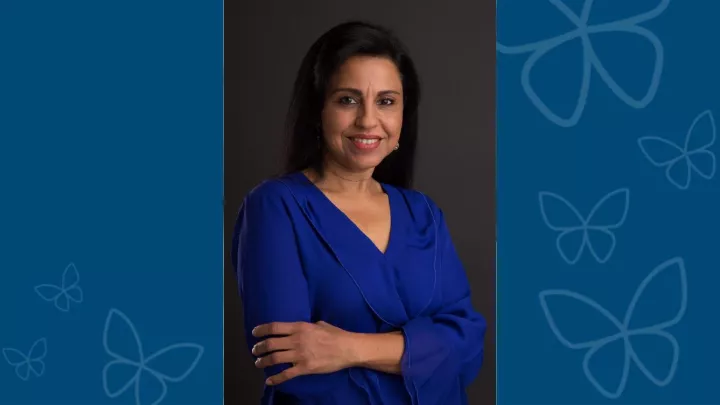Nuclear Medicine
Nuclear medicine uses radioactive materials and a special camera to diagnose and treat complex diseases. These tests provide information that is not available through other imaging methods.
Children’s Hospital Los Angeles offers the full range of nuclear scans. These tests enable us to diagnose some conditions in earlier stages so that your child receives timely, appropriate care. Nuclear studies also help us monitor response to treatments, making it possible to tailor therapies to your child’s changing needs.
Nuclear Medicine: Why Choose Us
Our team includes pediatric radiologists specializing in nuclear medicine. These experts have additional training in using radioactive substances to produce specialized images in all areas of the body. Meet our team.
Highlights of our program include:
- Advanced technology: Children’s Hospital uses the best available scanners, which produce detailed images of body structures. These technologies make it possible to complete studies using lower doses of radiation, which is safer for your child.
- Safety: We maintain American College of Radiology accreditation, the gold standard of care, for our nuclear medicine services. Accreditation signifies our commitment to providing the highest-quality tests and interpretations.
- Experienced team: In addition to nuclear medicine radiologists, our team includes technologists and a radiation safety team specializing in nuclear scans. We work together to plan your child’s imaging study. We perform accurate tests with the minimum necessary dose of radioactive substance.
- Child-friendly atmosphere: Our Child Life specialists undergo extensive training in supporting and comforting children during medical procedures. When needle pokes are necessary, we use age-appropriate techniques to make them less stressful.
- Expert sedation services: For some children, sedation makes nuclear studies safer and more comfortable. Children’s Hospital is one of the few programs in Southern California offering pediatric nuclear medicine scans with sedation. We use medications to help your child relax or go to sleep during the procedure. Our team includes internationally renowned pediatric anesthesiologists who provide sedation services to children of all ages.
How Do Nuclear Scans Work?
Nuclear imaging uses substances called radiotracers that accumulate in areas of increased cell activity. They also bind to proteins the body releases in response to certain medical issues. During the test, a special technology interprets the effects of the radiotracer to produce an image. If there is abnormal cell activity or proteins, the image will highlight it.
Nuclear studies often show the earliest signs of disease, which is why they are so helpful. But the image resolution isn’t as sharp as a computed tomography (CT) or magnetic resonance imaging (MRI) scan. Additional testing may be necessary to confirm or rule out a specific diagnosis.
Getting a Nuclear Medicine Study: What to Expect
Before your child’s scan, we provide you with information about what to expect and how to prepare. Read our radiology and imaging patient and family resources.
Your child’s test may involve a single-photon emission computed tomography (SPECT) or positron emission tomography (PET) scan. These tests are similar in that they involve large machines that measure biological interactions with the radiotracer. But these scans use different types of radiotracer substances. And the method of interpreting them is slightly different.
What to expect
Here’s what happens during a nuclear medicine scan:
- Depending on the type of scan, your child may receive the radiotracer substance by mouth, inhalable gas, injection or intravenous (IV) line.
- The PET and SPECT scanners are large machines with exam tables that slide in and out of their center. We use special positioning equipment to secure your child in place.
- Technologists then move the table to position your child within the scanner.
- During the test, the scanner detects the energy of the radiotracers and converts it into a 3D image.
- The body starts breaking down the radiotracer shortly after the test and eliminates it through urine or stool a day or so after the test.
Types of Nuclear Medicine Studies and Therapies We Offer
We offer a variety of nuclear medicine studies and therapies at Children’s Hospital. Some examples include:
- Bone scan, which detects signs of bone disease or injury and determines their severity.
- Cerebrospinal fluid (CSF) shunt study, which makes it possible to determine whether CSF is flowing through a surgically placed shunt.
- Epilepsy tests, which help us pinpoint the source of seizure activity.
- Gastric emptying study, which measures the rate at which food leaves the stomach.
- Iodine-131 treatment, which slows abnormal cell growth in children with thyroid cancer and hypothyroidism.
- MAG3 scan, which estimates how much blood flows through tiny filters in the kidneys (glomeruli).
- MIBG scan, which uses a substance such as iodine-123-metaiodobenzylguanidine (MIBG) to detect tumors affecting nerve cells.
- MIBG therapy for neuroblastoma, which uses iodine-131 and metaiodobenzylguanidine to destroy cancer cells throughout the body.
Comprehensive Radiology and Imaging Services for Children
We offer the full range of radiology and imaging studies at our main hospital, in one convenient location. Some of these services are also available at locations throughout the Los Angeles region. Find out more about Radiology and Imaging.


